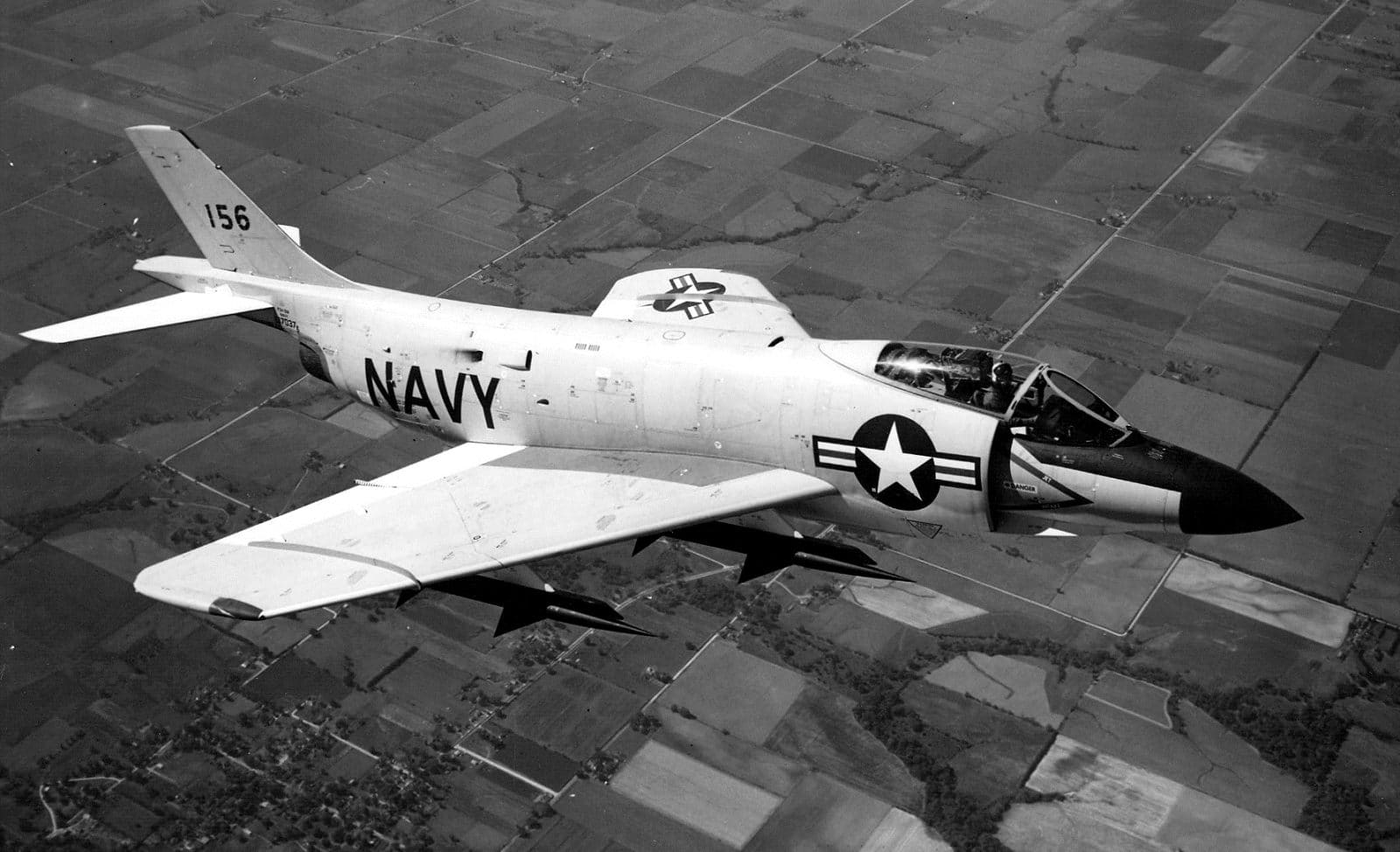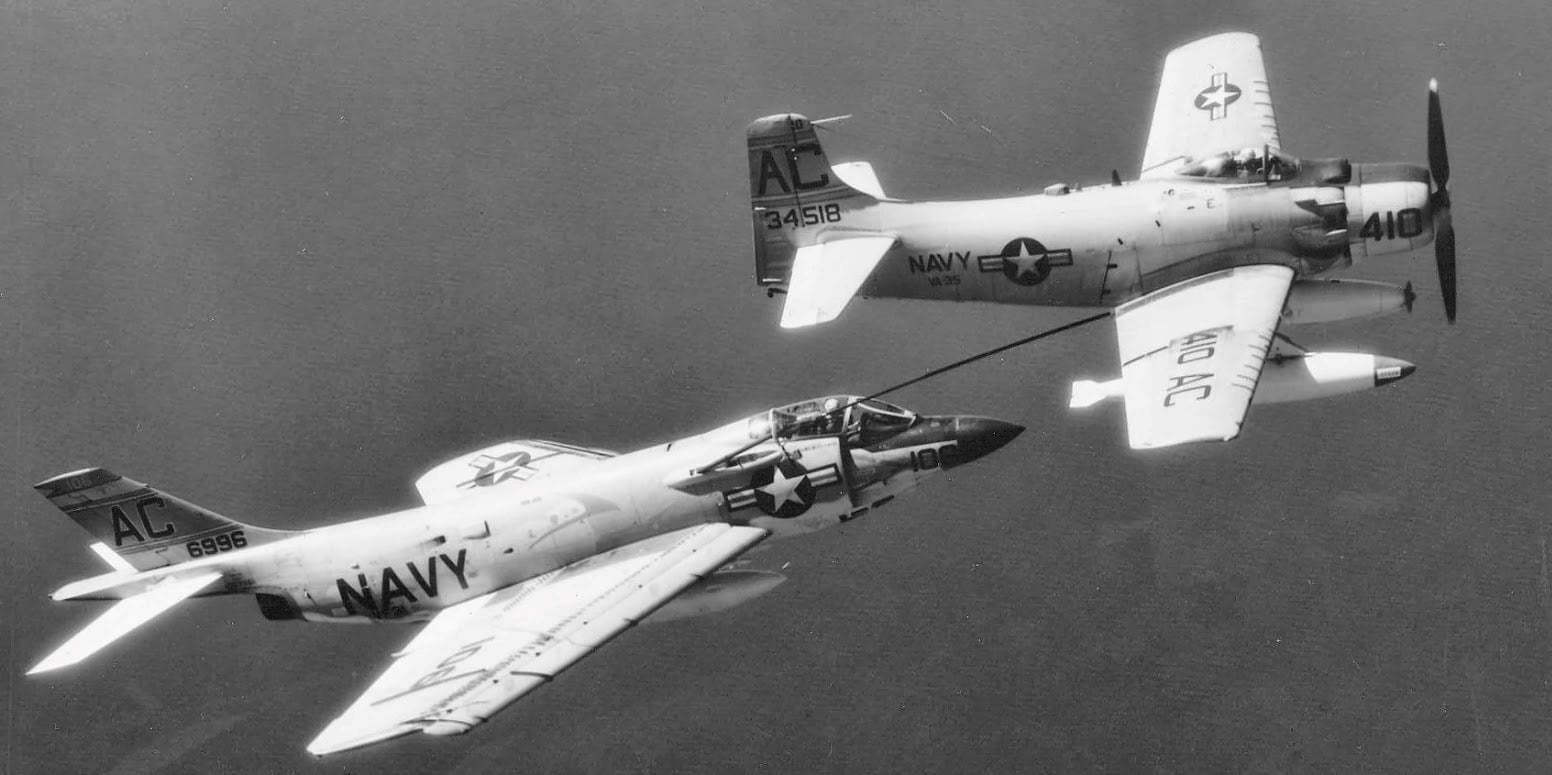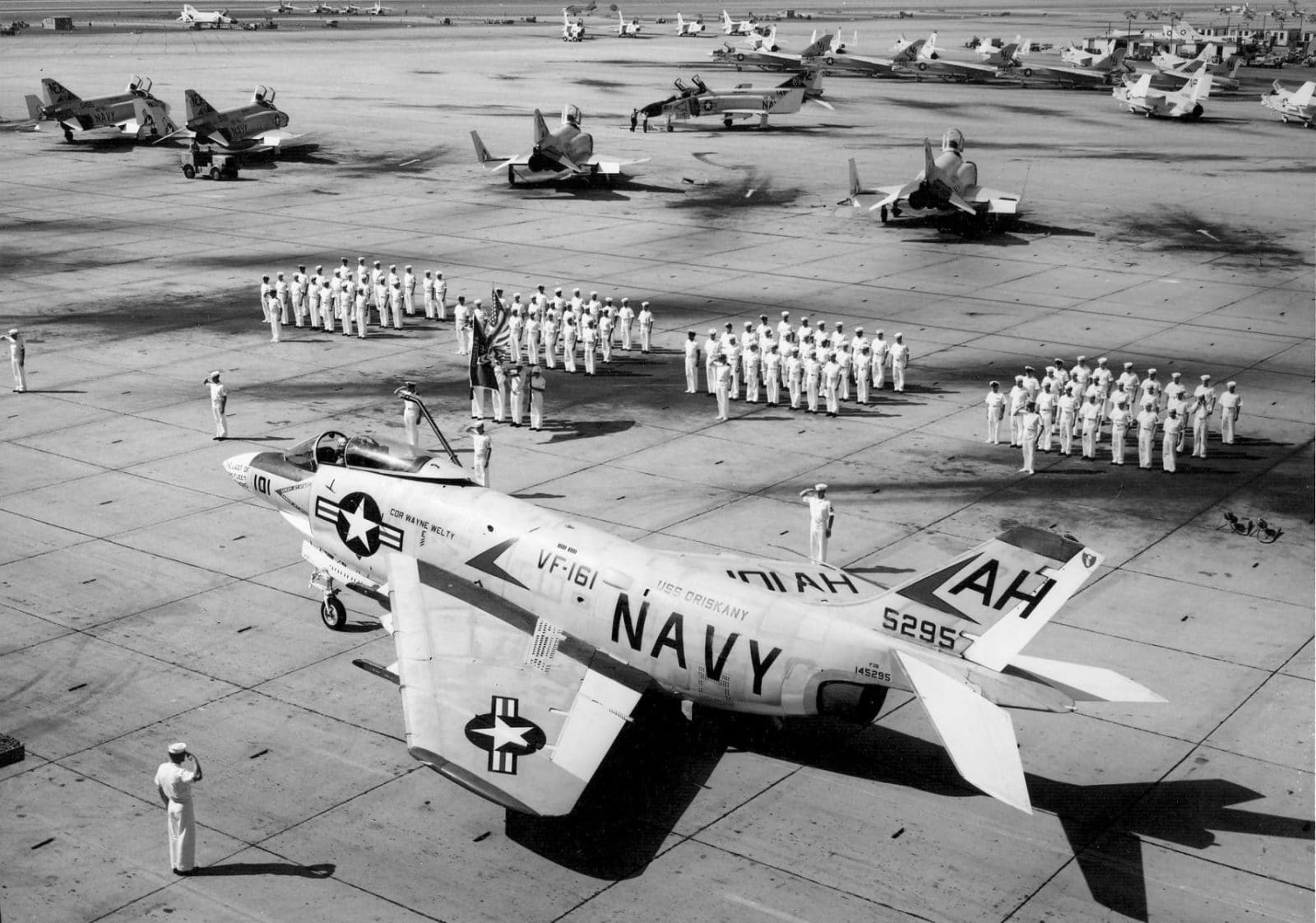Demonic Variants
The F3H-2N gained operational status during November of 1956. Initially armed with four 20 millimeter cannons, it became common practice to remove two of them to save weight when carrying ordnance. The F3H-2M variant was capable of firing the Raytheon AAM-N-2 Sparrow radar guidedair to air missile. Later the AAM-N-7 Sidewinder heat-seeking air to air missile was added to the Demon’s quiver. The initial radar system (AN/APG-51) was incrementally improved over the course of the F3H-2M’s service. The F3H-2 retained the ability to launch missiles but was the fighter-bomber version of the Demon, equipped with a 17% larger wing and capable of hauling a 6,000 pound payload.

McDonnell’s Engineers Were Learning Fast
The common design characteristics across all variants of the Demon were a single-engine turbojet powered all weather fighter aircraft featuring side-mounted engine air intakes and swept low mounted wings and empennage. The wings had full-span leading edge slats and a large one-piece flap, conventional ailerons, and wing fences adjacent to the ailerons. The aircraft’s hydraulic system was used for the Demon’s folding wings and for the fuselage mounted airbrakes located on both sides of the fuselage aft of the wing trailing edge. A retractable refueling probe was mounted on the starboard side adjacent to the cockpit. The horizontal stabilizers/elevators were all-moving, and the vertical stabilizer had a conventional rudder. The vertical stabilizer was mounted aft on an extended tailcone shaped like a duck tail that was a distinctive feature of the Demon.

Earning That Lead Sled Rep
The Demon was the first fighter to have no mechanical backup for its hydraulically operated control surfaces. The jet was equipped with a ram air hydraulic pump to power a small emergency-only hydraulic system. The system was only usable at high speeds. Even after the J71 engine was adopted, the F3H was underpowered. One anecdote claims that on a hot day at mile-high Kirtland Air Force Base (AFB) near Albuquerque in New Mexico, calculations for an F3H takeoff roll at military power indicated a required distance of infinity- not good when there are “only” 15,000 feet of available runway! Aviators appreciated the Demon’s handling qualities at altitude…but they had to get there first.

Sea Duty
In 1960 the last of 519 Demons rolled off the production line. In 1962 the designation system changes turned the F3H series into the F-3. The F2H-2N was redesignated F-3C, the F3H-2 was redesignated F-3B, and the F3H-2M became the MF-3B. Demons were operated exclusively by nine Atlantic Fleet and 15 Pacific Fleet fighter squadrons along with Composite Squadron THREE (VC-3), Air Test and Evaluation Squadron THREE (VX-3) and VX-4. Fighter Squadron ONE FOUR (VF-14) Tophatters took the F3H-2N to sea for the first time during a deployment with Carrier Air Wing ONE (CVW-1) embarked on the carrier USS Forrestal (CV-59). The jets fit into a niche between the Vought F-8 Crusader and Grumman F11F Tiger as the all-weather missile-armed interceptor of the fleet.

Saying So Long to The Chair
The last operational F-3s were removed from service when Fighter Squadron ONE SIX ONE (VF-161) Chargers traded up to the next McDonnell product- the F-4B Phantom II in 1964. Ironically an F3H-2N was adapted for use as a development airframe for the AN/APQ-50 radar system- the very same one used in the F-4B. In service the jets were occasionally referred to as The Chair due to the design’s excellent visibility for the pilot. F-3 pilots were known as Demon Drivers and their maintainers were known as Demon Doctors. Inevitably the aircraft also picked up a nickname referring to its lack of thrust- the Lead Sled or just Sled.

The Video
Here’s a short video of a Demon in action uploaded to YouTube by jaglavaksoldier.
[youtube id=”NCJ_nrui9dg” width=”800″ height=”454″ position=”left”]

I was a demon doctor ADJ -3 in VF 161 NAS Cecil Field Fl
GREAT article! I thoroughly enjoyed it! I started my Navy enlistment at NAS Miramar in VF-53 (Pukin Dogs) 1959. We had 12 F3H-2 Demons and deployed to West Pac in USS Ticonderoga (CVA-14). We lost one aircraft and pilot to a separated purchase cable in Tico. During a day arrested landing the cable parted after wire engagement and the aircraft continued off the angle deck into the water. No ejection was initiated and the bird sank in less that two minutes with the pilot still aboard.